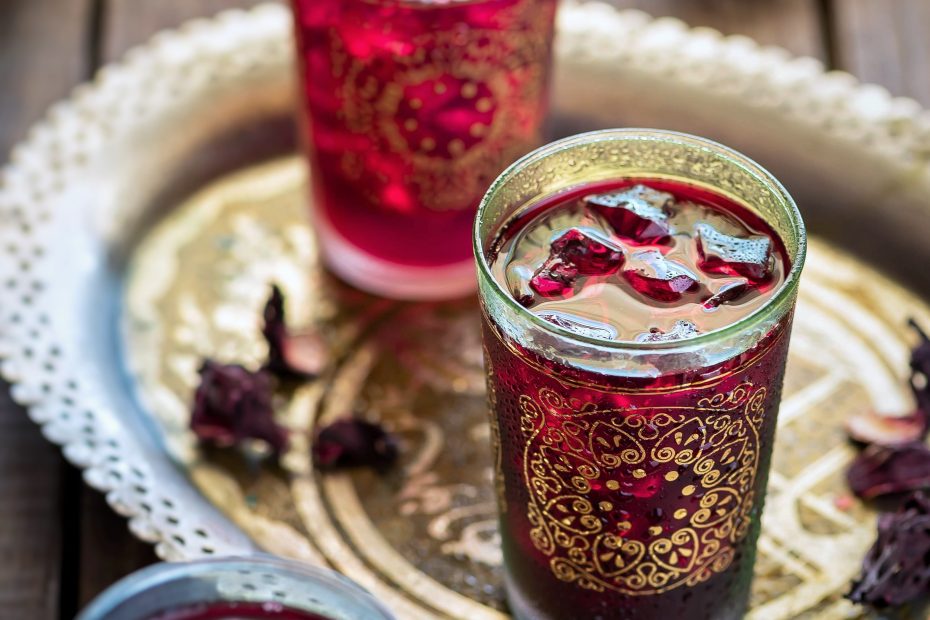Can you make any tea into iced tea?
I’ve verbally answered this question many times but it’s only fair that I talk about it too. Maybe we can exchange some tips
Then iced teas can potentially be made with all kinds of teas. In general if they are prepared by cold brewing it is best. Many (in a galaxy far far away…) years ago I used to make hot tea (with random teabags), let it cool, and take it to the beach. My friends called it “dirty water,” and actually, looking back, it wasn’t the best. The liquid was dark, with a vague smell and a very delicate taste.
Well, back to us. Potentially all teas can be made both hot and cold however there are some that come out better than others, with more intense and pleasant aroma.
With flavored teas and thus enriched with pieces of fruit, flowers, spices and/or flavorings you are on the safe side. However, if like me you prefer pure teas here are my suggestions: 5 perfect teas to make cold.
Genmaicha
Genmaicha is a Japanese green tea traditionally blended with roasted rice. Its flavor is unmistakable. To some, it reminds one of popcorn. It certainly has a certain savoriness, a strong but not aggressive character, with slightly salty notes. All characteristics that you can appreciate with either a hot or cold brew.
Sencha
Let’s stay in Japan with another classic: Sencha, perhaps the most widely drunk tea in the Rising Sun. At first I didn’t think it could make well even cold, but instead it surprised me with special effects. Sweet and highly thirst-quenching. Come home after a day or afternoon in the sun and a glass of this tea will make you feel like new!
Kukicha
Kukicha is another Japanese green tea but, unlike the others, composed mostly of stems and not leaves. This causes the tea to have a flavor reminiscent of dried fruits and especially nuts. Intense notes that can also be perceived with cold brewing. If you also happen to try the roasted Kukicha (premise, I have only heard the unaged three-year version) you will not be disappointed.
Long Jing
Let us now turn to China and one of my favorite teas: green tea Long Jing. Its boiled chestnut flavor perhaps makes it more suitable for winter, but I absolutely love it cold as well. I’m fascinated by its sweetness, its complexity, and then, maybe I wouldn’t eat roasted chestnuts in August but a slice of bread with chestnut cream yes
Green tea with mint
A summer must-have, a tradition widespread in North Africa, for example in Morocco. We are talking about mint green tea. I’m adding it separately, I don’t count it among the flavored ones because you can conveniently prepare it at home as I do, assembling the ingredients on the spot. Just put two soup spoons of Chinese green tea (e.g. Gunpowder, Chun Mee, Green Mao Feng,…) and about 20 fresh mint leaves per liter of water in the pitcher. As mint, I was recommended Red Mint (Mentha aquatica), which is sweet and mild. Alternatively, peppermint, spicata or dwarf mint is often used.
Darjeeling
Not just green tea. Black tea is also great iced, and my favorite is Darjeeling, the oxidized tea from the Indian region of the same name that we have talked so much about, thanks in part to tea planter Nalin Modha. Why in my opinion is it better as an iced tea than others? Because its natural floral, muscatel note is enhanced by cold brewing, creating a very aromatic and fresh drink.
Puer
So far I have told you about teas I am familiar with cold brewed, a world that has been tried and tested many times before. These days, however, I received a newsletter from the Misty Peak brand dedicated to puer iced tea. While waiting to try this variation of iced tea as well, I leave you with their recipe:
15 g of tea per 2 liters of room temperature water left to steep for 8 to 12 hours in the refrigerator.
It lasts in the cooler for three days, and if you want to add a spoonful of honey to it, it’s a great fit!
And now I await your suggestions: which teas do you prefer both hot and cold?
